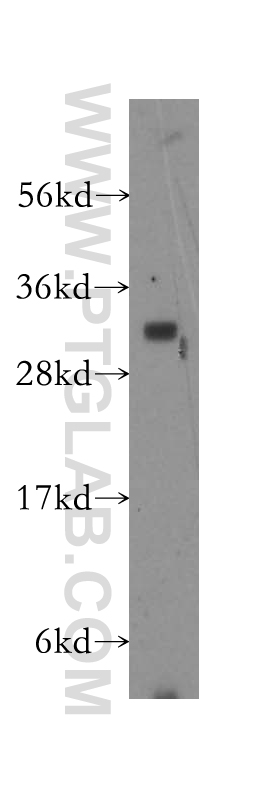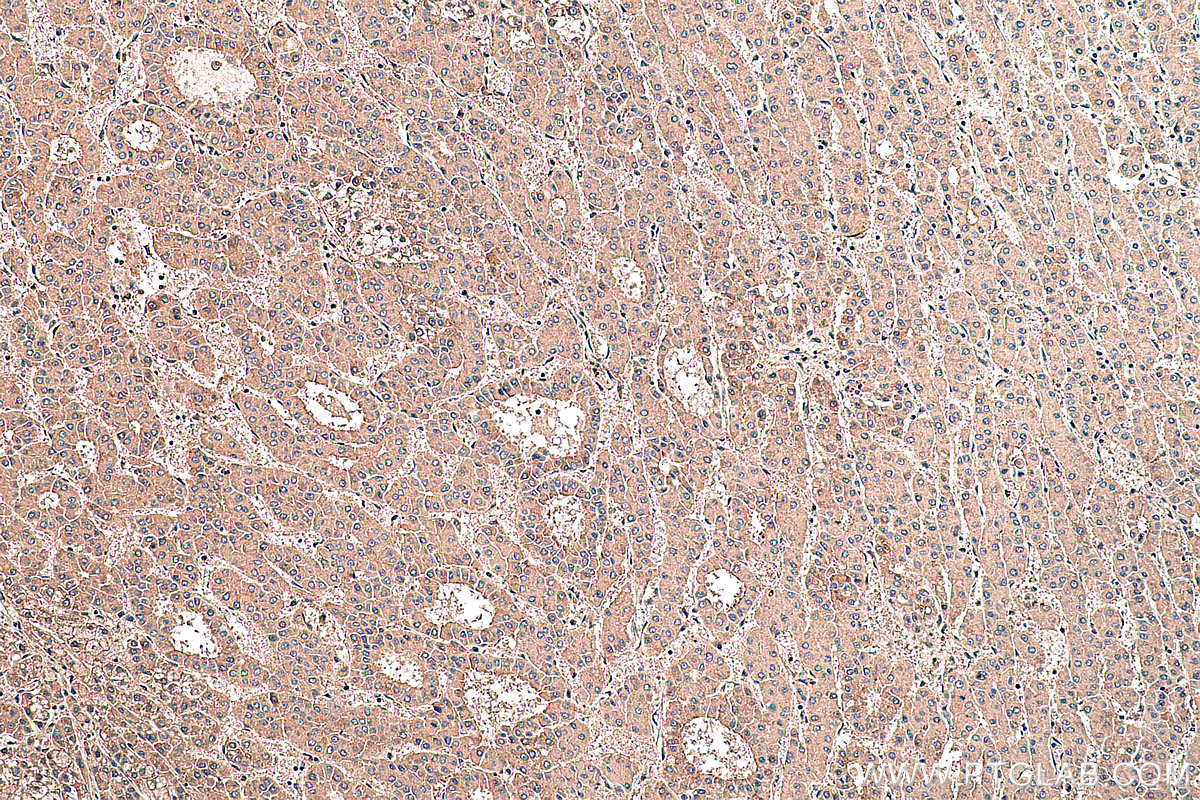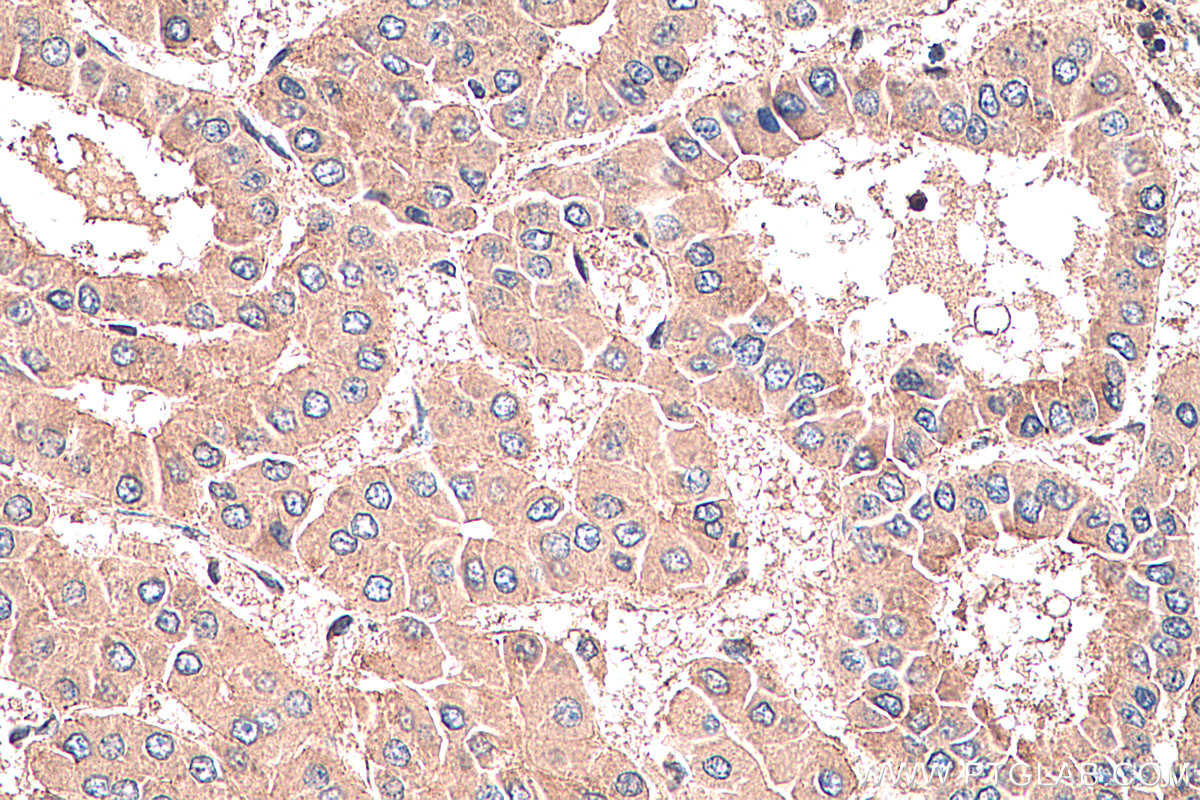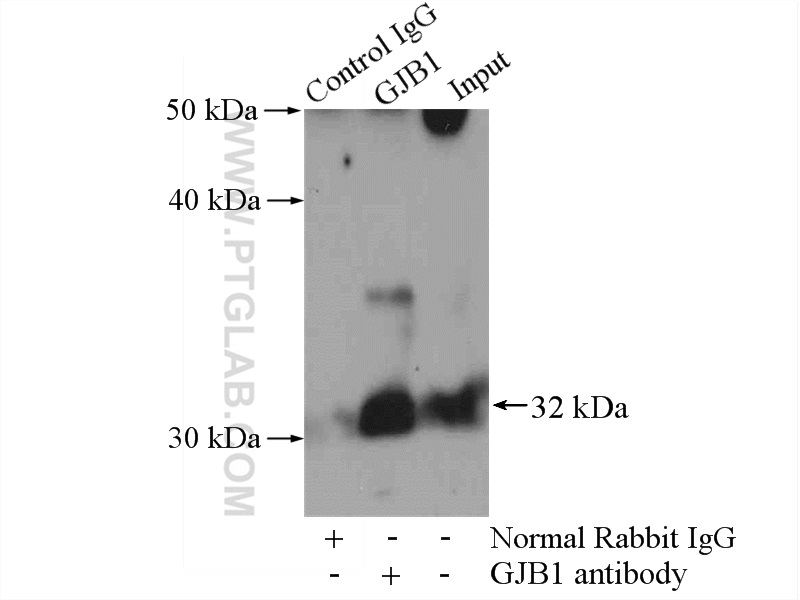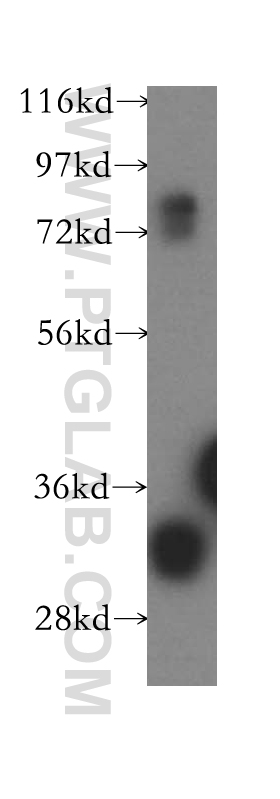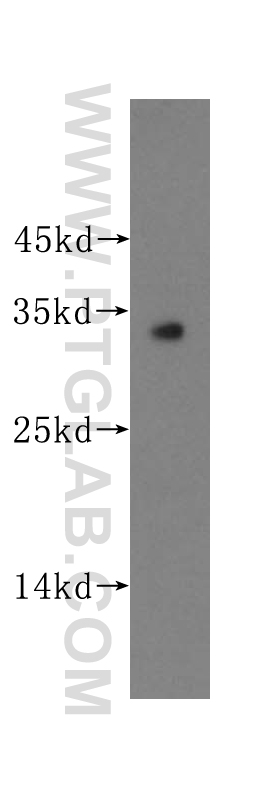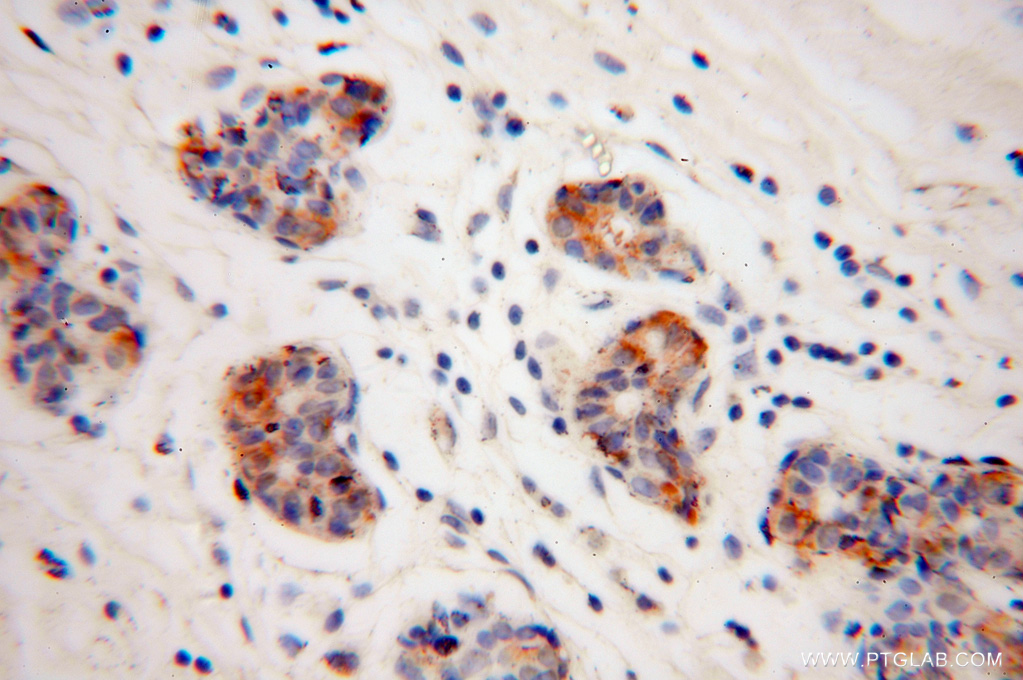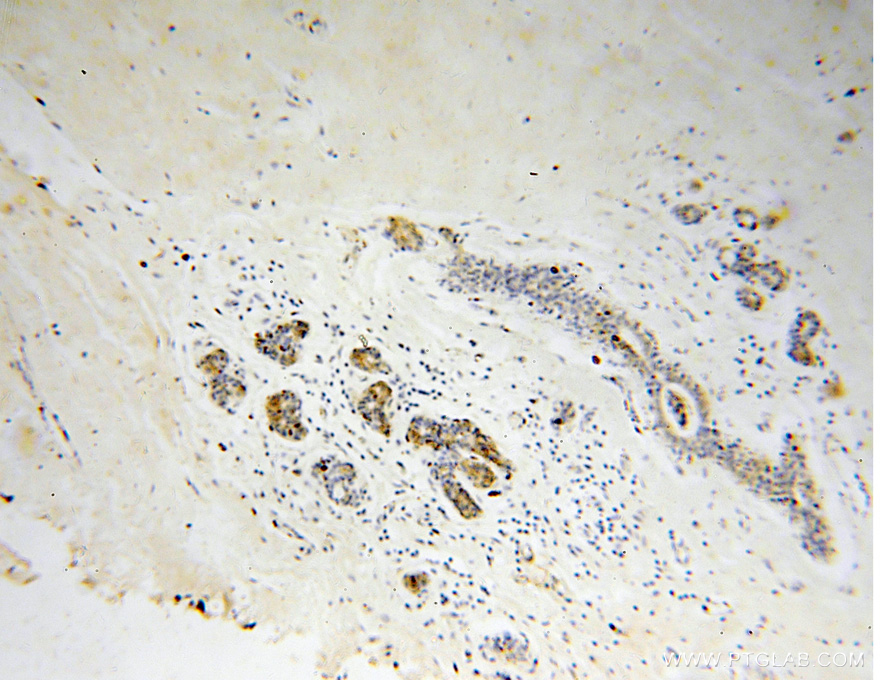验证数据展示
经过测试的应用
| Positive WB detected in | mouse brain tissue, A375 cells, human liver tissue, mouse skin tissue |
| Positive IP detected in | mouse brain tissue |
| Positive IHC detected in | human liver cancer tissue, human colon cancer tissue Note: suggested antigen retrieval with TE buffer pH 9.0; (*) Alternatively, antigen retrieval may be performed with citrate buffer pH 6.0 |
推荐稀释比
| 应用 | 推荐稀释比 |
|---|---|
| Western Blot (WB) | WB : 1:200-1:1000 |
| Immunoprecipitation (IP) | IP : 0.5-4.0 ug for 1.0-3.0 mg of total protein lysate |
| Immunohistochemistry (IHC) | IHC : 1:50-1:500 |
| It is recommended that this reagent should be titrated in each testing system to obtain optimal results. | |
| Sample-dependent, Check data in validation data gallery. | |
产品信息
10450-1-AP targets Connexin-32 in WB, IHC, IF, IP, ELISA applications and shows reactivity with human, mouse samples.
| 经测试应用 | WB, IHC, IP, ELISA Application Description |
| 文献引用应用 | WB, IHC, IF |
| 经测试反应性 | human, mouse |
| 文献引用反应性 | human, mouse |
| 免疫原 | Connexin-32 fusion protein Ag0659 种属同源性预测 |
| 宿主/亚型 | Rabbit / IgG |
| 抗体类别 | Polyclonal |
| 产品类型 | Antibody |
| 全称 | gap junction protein, beta 1, 32kDa |
| 别名 | GJB1, Gap junction beta-1 protein, Gap junction beta 1 protein, CX32, CMTX1 |
| 计算分子量 | 32 kDa |
| 观测分子量 | 32 kDa |
| GenBank蛋白编号 | BC002805 |
| 基因名称 | Connexin-32 |
| Gene ID (NCBI) | 2705 |
| RRID | AB_2110629 |
| 偶联类型 | Unconjugated |
| 形式 | Liquid |
| 纯化方式 | Antigen affinity purification |
| UNIPROT ID | P08034 |
| 储存缓冲液 | PBS with 0.02% sodium azide and 50% glycerol , pH 7.3 |
| 储存条件 | Store at -20°C. Stable for one year after shipment. Aliquoting is unnecessary for -20oC storage. |
背景介绍
Connexin-32 (Cx32), also known as Gap junction beta 1 protein (GJB1), belongs to the connexin family. Connexins are membrane-spanning proteins that assemble to form gap junction channels that facilitate the transfer of ions and small molecules between cells. Connexin-32 is the major gap junction protein of liver, and the expression is also found in the brain and other organs. It is involved in tumorigenesis and liver regeneration. Connexin-32 plays an important role in peripheral nerve. Defects in Connexin-32 are the cause of Charcot-Marie-Tooth disease X-linked type 1 (CMTX1), an inherited peripheral neuropathy. Cx32 protein can be detected as a 27-32 kDa monomer and a 48-54 kDa dimer (PMID: 8266101; 8613761; 8608591; 19265674; 17972320; 19845480)
实验方案
| Product Specific Protocols | |
|---|---|
| WB protocol for Connexin-32 antibody 10450-1-AP | Download protocol |
| IHC protocol for Connexin-32 antibody 10450-1-AP | Download protocol |
| IP protocol for Connexin-32 antibody 10450-1-AP | Download protocol |
| Standard Protocols | |
|---|---|
| Click here to view our Standard Protocols |
发表文章
| Species | Application | Title |
|---|---|---|
World J Gastroenterol PBX1 attributes as a determinant of connexin 32 downregulation in Helicobacter pylori-related gastric carcinogenesis. | ||
Brain Res Bull Transient receptor potential vanilloid 4 is involved in the upregulation of connexin expression following pilocarpine-induced status epilepticus in mice. | ||
Histopathology Down-regulation of connexin43 and connexin32 in keratocystic odontogenic tumours: potential association with clinical features. | ||
Oncol Lett Effects of Helicobacter pylori on the expression levels of GATA-3 and connexin 32 and the GJIC function in gastric epithelial cells and their association by promoter analysis. |
